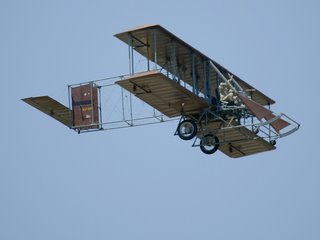Tuesday, January 8, 2008
Signal processing expert: the day when imagination, not technology, is our chief limitation

Posted by John Keller
I had a fascinating conversation with a signal-processing expert at Analog Devices yesterday. It seems we may be reaching the stage where innovation is not limited by technology any longer, but by the vision of the folks designing the systems.
For so long, systems designers have had to work within the constraints of whatever is the state of the art in technology, and nearly always fall short of what they might actually want to achieve. That's not so much true anymore, says Dr. Mike Coln, division fellow of precision converters at the Analog Devices Inc. signal processing group in Wilmington, Mass.
"What is possible on silicon these days is fairly impressive," Coln says. "There are many cases where the limitations in the sorts of products you can build, and the opportunities you can serve, are not so much in silicon, but constrained by the vision of the people designing those products."
That sounds like we've reached the stage where if you can dream it up, you can build it, with not too many technological hurdles getting in your way.
One thinks back to the Wright Brothers, who for all their lives undoubtedly gazed at birds and flying insects, and struggled mightily to develop rudimentary technology necessary to emulate them. They came up with wood, wire, fabric, and a noisy engine. It was barely just good enough.
Now advanced aircraft developers can build robotic insects and birds. It is truly amazing, at the expense of sounding gushy, how far technology has advanced in the hundred-odd years since then. More to the point, it's amazing the technological advantages that today's systems designers have -- how spoiled they really are.
If you can imagine it, you can build it -- no matter how complex. If only Wilbur and Orville knew.
But the story doesn't stop here. In fact, it's the beginning of a whole new volume that begins something like this: if technology is no longer the biggest challenge to innovation, then the very imaginations of the systems designers become our biggest limitation. "Now it is people issues, as opposed to engineering issues," Coln says.
How to break through these new limitations? "We need better partnerships between people like me and the people in the systems-integration community," Coln says. "That's my call to arms. By partnering with their suppliers, the integrators discover the overlap between what is possible and what is worthwhile. They are not aware of what we are truly capable of doing, and we are not aware of the challenges they face."
Perhaps as we move forward into the 21st century, these imagination limitations, as opposed to technological limitations, will give rise to new business practices and systems-development models that could redefine what we know as inter-company competition.
I'm not sure exactly how something like that might come about, but the results could be worthwhile. All we have to do is imagine it.

Posted by John Keller
I had a fascinating conversation with a signal-processing expert at Analog Devices yesterday. It seems we may be reaching the stage where innovation is not limited by technology any longer, but by the vision of the folks designing the systems.
For so long, systems designers have had to work within the constraints of whatever is the state of the art in technology, and nearly always fall short of what they might actually want to achieve. That's not so much true anymore, says Dr. Mike Coln, division fellow of precision converters at the Analog Devices Inc. signal processing group in Wilmington, Mass.
"What is possible on silicon these days is fairly impressive," Coln says. "There are many cases where the limitations in the sorts of products you can build, and the opportunities you can serve, are not so much in silicon, but constrained by the vision of the people designing those products."
That sounds like we've reached the stage where if you can dream it up, you can build it, with not too many technological hurdles getting in your way.
One thinks back to the Wright Brothers, who for all their lives undoubtedly gazed at birds and flying insects, and struggled mightily to develop rudimentary technology necessary to emulate them. They came up with wood, wire, fabric, and a noisy engine. It was barely just good enough.
Now advanced aircraft developers can build robotic insects and birds. It is truly amazing, at the expense of sounding gushy, how far technology has advanced in the hundred-odd years since then. More to the point, it's amazing the technological advantages that today's systems designers have -- how spoiled they really are.
If you can imagine it, you can build it -- no matter how complex. If only Wilbur and Orville knew.
But the story doesn't stop here. In fact, it's the beginning of a whole new volume that begins something like this: if technology is no longer the biggest challenge to innovation, then the very imaginations of the systems designers become our biggest limitation. "Now it is people issues, as opposed to engineering issues," Coln says.
How to break through these new limitations? "We need better partnerships between people like me and the people in the systems-integration community," Coln says. "That's my call to arms. By partnering with their suppliers, the integrators discover the overlap between what is possible and what is worthwhile. They are not aware of what we are truly capable of doing, and we are not aware of the challenges they face."
Perhaps as we move forward into the 21st century, these imagination limitations, as opposed to technological limitations, will give rise to new business practices and systems-development models that could redefine what we know as inter-company competition.
I'm not sure exactly how something like that might come about, but the results could be worthwhile. All we have to do is imagine it.
